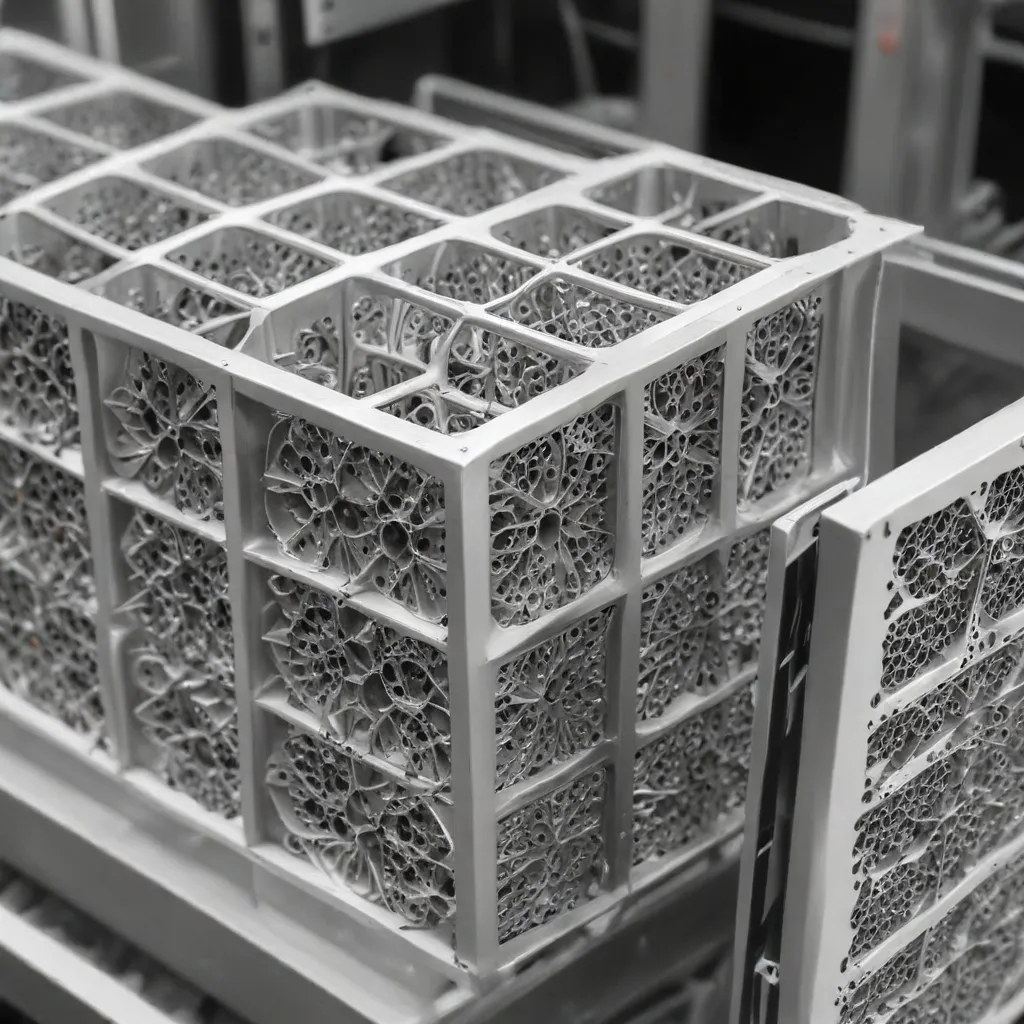
The Rise of Additive Manufacturing in Thermal Engineering
In the ever-evolving world of thermal management, the emergence of additive manufacturing (AM) has opened up new frontiers for air-cooled heat exchanger (ACHE) design and optimization. As industries like aerospace, automotive, and electronics grapple with increasingly complex thermal challenges, the promise of AM-enabled heat exchangers has captured the attention of forward-thinking engineers and designers.
The traditional approach to ACHE design often involved compromises between performance, weight, and manufacturability. However, the flexibility and design freedom offered by additive manufacturing are transforming this paradigm. By leveraging the capabilities of AM, engineers can now create intricate, customized heat exchanger geometries that were previously unattainable through conventional manufacturing methods.
Unlocking the Potential of Additive Manufacturing for ACHE Design
The HEWAM (Heat Exchanger with Additive Manufacturing) project, spearheaded by a consortium of industry leaders, exemplifies the potential of AM in ACHE design. By combining the expertise of Temisth, AddUp, and Sogeclair, the project aims to develop innovative heat exchanger solutions that push the boundaries of performance and integration.
One of the key advantages of the HEWAM approach is the ability to create complex, double-curved heat exchanger geometries that can seamlessly integrate with the curvature of aircraft engine components or other confined spaces. This adaptability is critical in industries like aerospace, where the efficient use of available space is paramount. By considering thermal, fluid, and mechanical constraints in the design process, the team has developed a customized solution that optimizes heat transfer and minimizes pressure drop, all while maintaining structural integrity.
Overcoming Challenges with Additive Manufacturing
The HEWAM project has also addressed the inherent challenges associated with additive manufacturing of heat exchangers. Inconel 718, the chosen material for the design, presents both advantages and limitations compared to more common materials like aluminum.
While Inconel 718 is heavier and less conductive than aluminum, it offers the benefits of thin-walled construction (less than 0.5 mm) and the ability to create intricate fin geometries (as thin as 0.15 mm). This level of detail and precision is crucial for maximizing heat transfer performance.
To overcome the limitations of Inconel 718, the consortium has developed a specific design methodology that takes into account the variation in air temperature and density. By adapting the channel width and fin geometry along the air flow path, the team has been able to maintain thermal performance while mitigating the impact of pressure drop.
Additive Manufacturing Enablers for ACHE Design
The HEWAM project has leveraged the capabilities of advanced additive manufacturing systems, such as the EOS M 400-4 multi-laser metal 3D printer, to bring their innovative heat exchanger design to life. This industrial-grade system boasts impressive features like a large build volume (400 x 400 x 400 mm) and four high-power (400-watt) fiber lasers, enabling rapid and precise production of the complex heat exchanger components.
The team’s commitment to additive manufacturing feasibility is evident in their iterative design process, which involves close collaboration between CAD, computational fluid dynamics (CFD), and mechanical simulations. This holistic approach ensures that the final heat exchanger design not only meets the thermal performance requirements but also adheres to the constraints and capabilities of the chosen additive manufacturing technology.
Validating ACHE Performance through Rigorous Testing
After the successful production of three heat exchanger prototypes on the FormUp 350 AM system, the HEWAM team embarked on a comprehensive testing regime. The heat exchangers were evaluated on a customized test loop developed by Temisth, allowing the team to verify the accuracy of their numerical simulations and validate the real-world performance of the AM-enabled designs.
The results of these tests have been promising, with the AM-produced heat exchangers meeting the targeted thermal and fluid dynamics performance targets. This validation process is crucial for building confidence in the reliability and effectiveness of additive manufacturing for ACHE applications, paving the way for broader industry adoption.
Exploring the Limitless Possibilities of Additive Manufacturing
The HEWAM project represents a significant stride forward in the integration of additive manufacturing with air-cooled heat exchanger design. By leveraging the unique capabilities of AM, the consortium has demonstrated the potential to create highly customized, high-performance heat exchangers that can be seamlessly integrated into various industry applications.
As the https://www.aircooledheatexchangers.net/ blog continues to explore the frontiers of thermal engineering, the insights and innovations from the HEWAM project serve as a testament to the transformative power of additive manufacturing. By embracing this technology, thermal engineers can unlock new avenues for optimization, weight reduction, and design flexibility, ultimately driving greater efficiency and innovation across diverse industries.
Conclusion: Embracing the Future of ACHE Design with Additive Manufacturing
The HEWAM project has demonstrated that additive manufacturing is not merely a buzzword in the world of air-cooled heat exchanger design, but a transformative technology that can unlock new levels of performance and customization. By leveraging the design freedom and precision afforded by AM, engineers can create intricate heat exchanger geometries that push the boundaries of thermal management, addressing the evolving needs of industries like aerospace, automotive, and electronics.
As the https://www.aircooledheatexchangers.net/ blog continues to chart the progress of this exciting field, the insights and innovations shared by the HEWAM consortium will undoubtedly inspire thermal engineers and designers to explore the limitless possibilities of additive manufacturing. By embracing this technology, the industry can look forward to a future where air-cooled heat exchangers are not mere components, but tailored solutions that seamlessly integrate with their applications, delivering unparalleled efficiency and performance.

